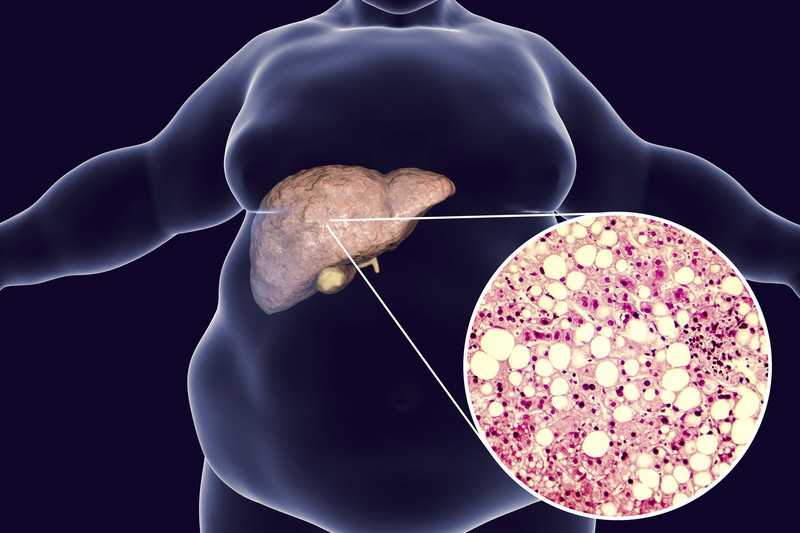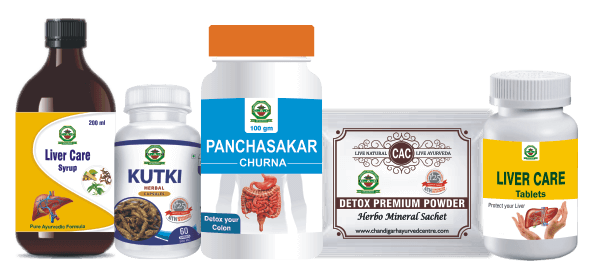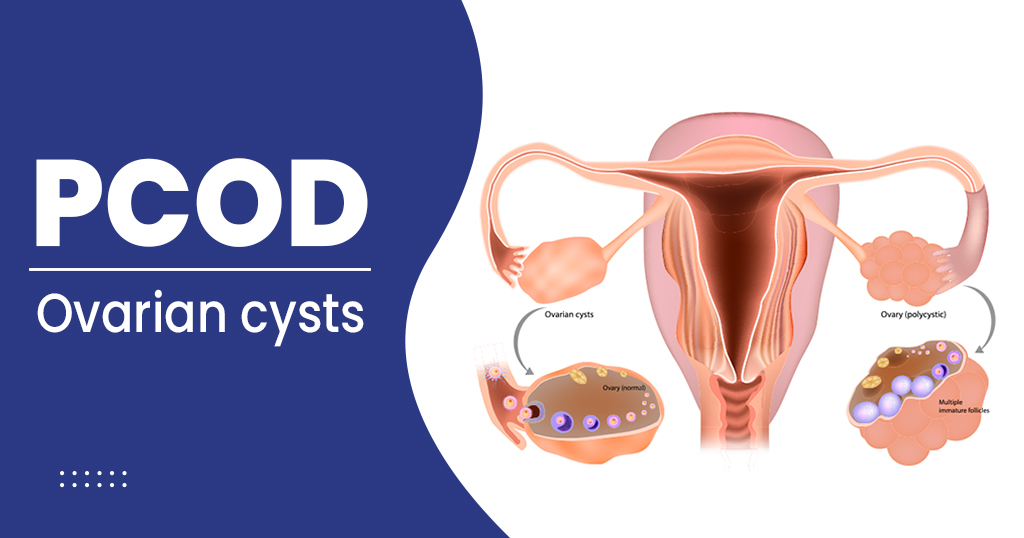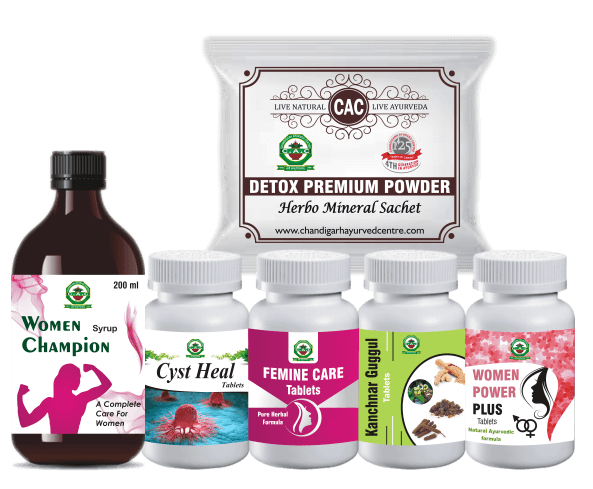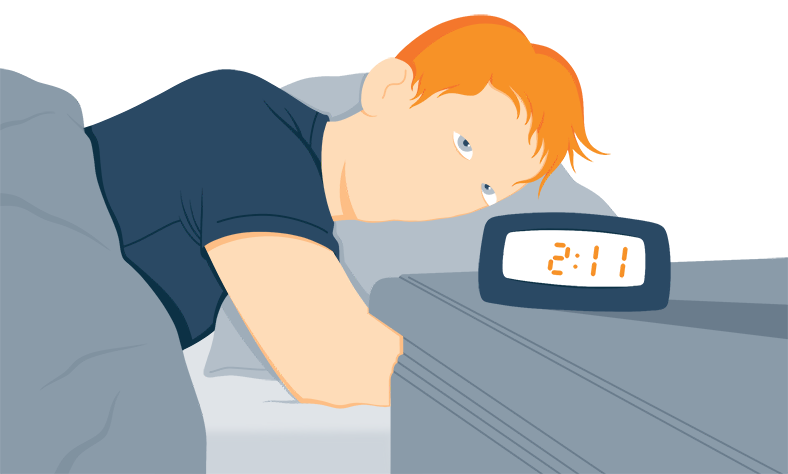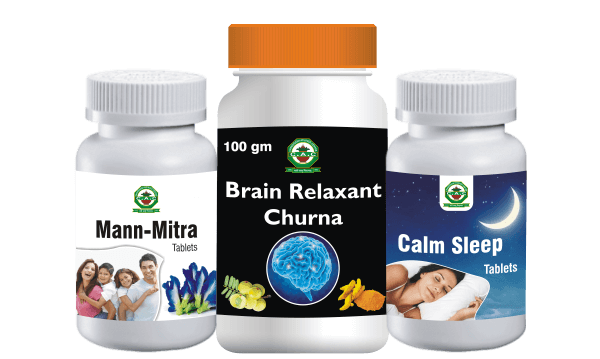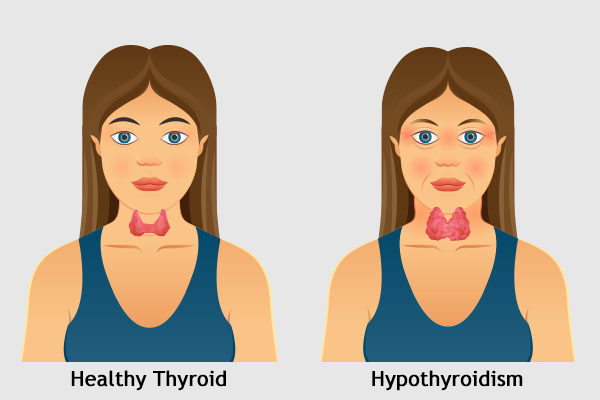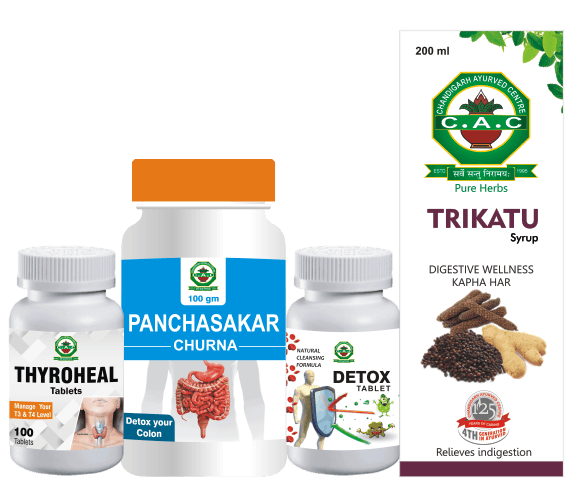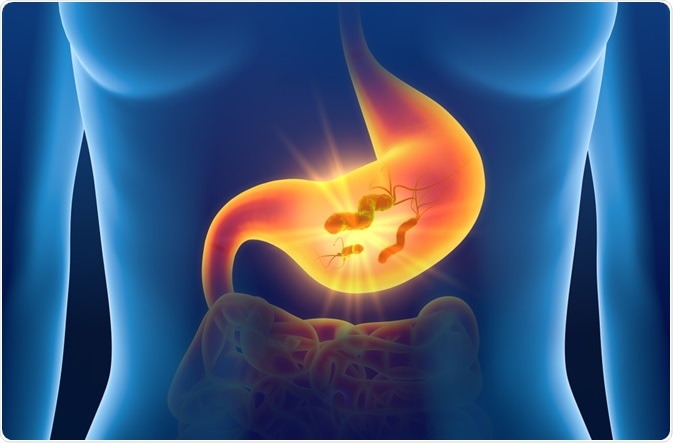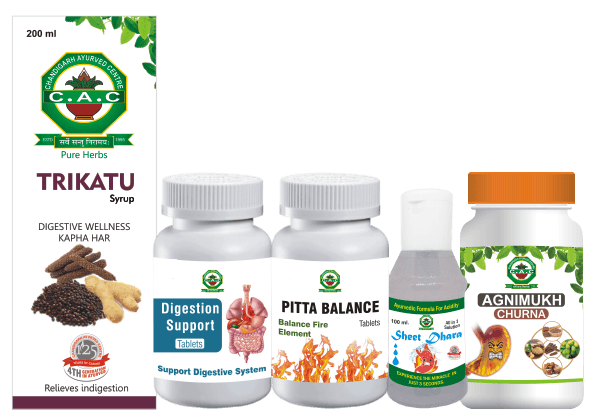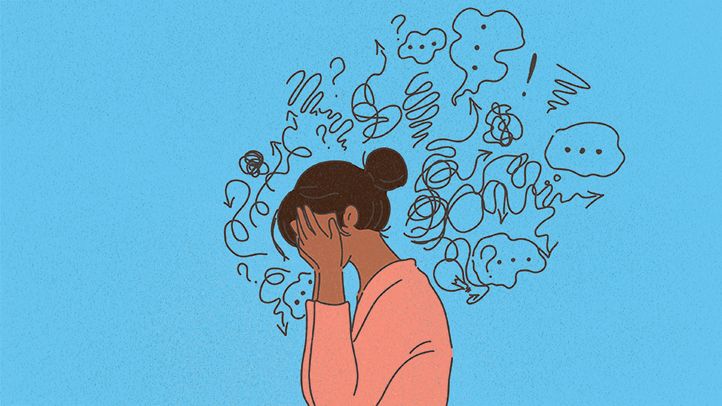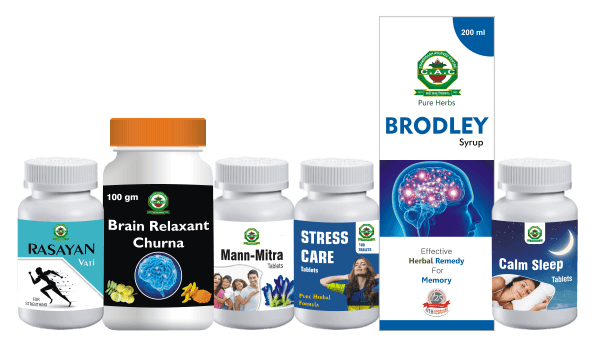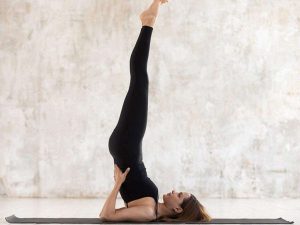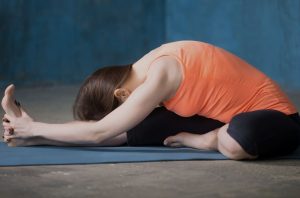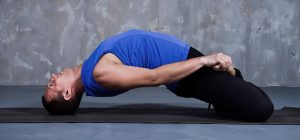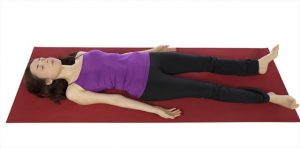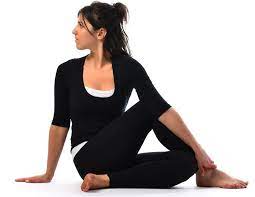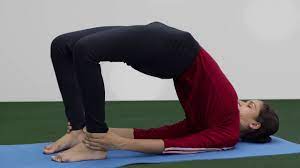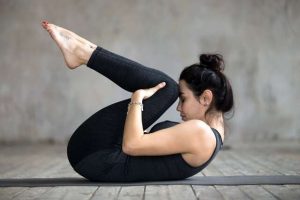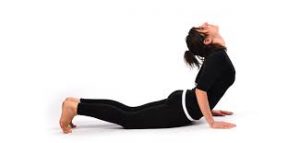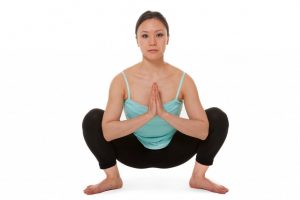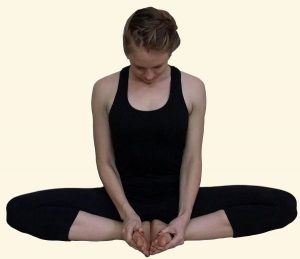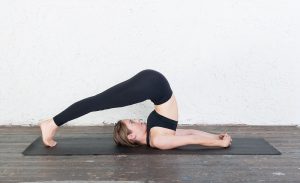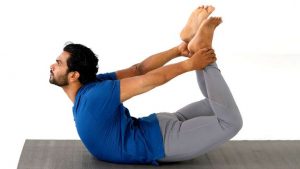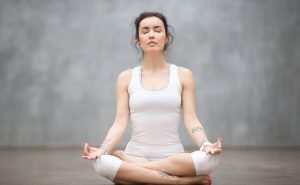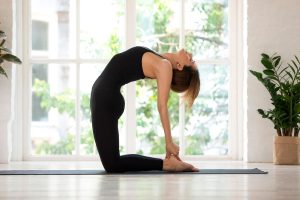Author Archives: Dr. Vaidya Karanvir Singh
How Ayurveda Is Better In Managing Fatty Liver Naturally?
- December 23, 2022
- Posted by Dr. Vaidya Karanvir Singh
- 0 Comment(s)
Understanding organ Liver: Liver is the largest gland inside the body. Liver is the center of metabolism. Liver secretes all the essential digestive enzymes that aid healthy digestion. It is very essential for fat metabolism hence also the common site for fat accumulation. It is the organ of detoxification. It is also a storage organ for storing vitamins, proteins and carbohydrates. It is the factory for clotting factor and plasma protein such as albumin. And it performs various functions.
What is fatty Liver?
Fatty liver defines as abnormal accumulation of the fat or triglycerides inside the liver cells. The process of fat accumulation is called steatosis and is reversible. Fatty liver occurs when fatty content in the liver extends more than 5%. In some people fatty live is accompanied with inflammation of the liver and liver cell death called as steatohepatitis. Fatty liver is hard to detect because its symptoms are not noticeable easily. Fatty liver can be of two types:
- Alcoholic Fatty Liver
- Non-alcoholic fatty liver
Reasons behind Fatty liver:
- Overweight or obesity
- Lack of physical exercise
- Poor lifestyle
- Heavy alcohol drinking
- Insulin resistance or type 2 diabetes
- Metabolic syndrome (insulin resistance, high blood pressure, high triglyceride levels)
- Certain medications like steroids, tamoxifen, diltiazem etc
- Exposure to some toxins
- Certain infections like hepatitis C etc
- Middle aged or older
- Females are more prone
- genetics
How Patient with Fatty Liver Presents?
Normally a person with fatty liver often have no symptoms until the disease progress to liver cirrhosis. A person comes with the complaints such as:
- Pain in abdomen
- Feeling of fullness in the upper right side of the abdomen
- Loss of appetite
- Nausea and vomiting
- Weakness
- Upset gut
- Yellow discoloration of the skin and white part of the eye
- Fatigue and tiredness
- Mental confusion
- Rapid weight loss
- Itchy skin
- Enlargement of breast
- Swelling of the legs
Diagnostic criteria:
- Ultrasonography
- CT scan
- Liver biopsy
- Fibro Scan
- Liver function test
Management of the fatty liver with modern medicines:
Modern medicines do not provide any complete cure for the disease. Only symptomatic treatment and lifestyle management helps a little like:
- Lipid or cholesterol lowering agents like statins, bempedoic acid, bile acid sequestrants, Ezetimibe etc. But again these medications do not reversed the change
- Lifestyle changes like uptake of reduced amount of total and saturated fats in the diet, weight reduction exercises or running, eating plenty of fruits and vegetables, staying hydrated.
- Anti-diabetic medications like metformin etc
- Intake of omega 3 fatty acids and vitamin E, vitamin D
- Nicotinic acid to control the high cholesterol
- Nutritional supplements like soy protein, garlic, plant stanols and sterols etc
Ayurveda on Fatty liver:
According to Ayurveda, liver or Yakrit is the seat of pitta dosha and Agni (fire). Pitta has hot potency and handles the metabolism and biochemical reactions that produces heat and energy for normal functioning of the body. on the other hand Kapha dosha has cold potency and stabilized in nature. When there is excessive rise in kapha dosha, it has tendency to suppress pitta dosha. Hence balancing the kapha dosha along with pitta dosha is required to treat Fatty Liver.
Managing Fatty liver with Ayurveda:
- Vaman (therapeutic emesis)
- Utsadan (application of kapha reducing pasteon the body)
- Upvasa (fasting)
- Pachana dravya (katu, tikta rasa and hot potency drugs to digest Ama (toxins)
- Some Ayurvedic herbs to haridra (turmeric), aloe vera, Bhumi amla (Phyllanthus niruri), Punarnava (boeharavia diffusa), kutki etc
Managing fatty liver with Chandigarh Ayurved Centre:
1. Detox Premium Powder:
As the name suggests this herbal powder helps in overall detoxification of the liver. This herbal powder contains ingredients such as giloy satv, shukta pishti, parval pishti, kamdudha ras, gandhak rasayan, etc. It reduces pain, swelling, abdominal pain, & abdominal swelling.
Recommended Dosage: Take 1 sachet twice daily with normal water.
2. Liver care tablet:
Liver Care tablet help in balancing Pitta dosha. These tablets stimulate the growth of new liver cells, promote functions of liver, and improve blood flow from the liver. It helps in the treatment of fatty liver, liver cirrhosis, Hepatitis, hepatomegaly, and obstructive Jaundice. Liver Care Tablets contains Ingredients like Kalmegh (Andrographis paniculata), Kutaki(Picrorhiza kurroa), Bhumi amla( phyllanthus niruri), Giloy(Tinopora Cordifolia), Yavakshar( Hordeum vulgare), Imli Kshar( Tamarindus indica), Mukta Shukta pisti etc. It helps in removing fats from the liver cells & keeps your liver healthy.
Recommended Dosage: Take 1 tablet twice daily with normal water.
3. Kutki Capsules:
Kutki capsules are a pure herbal extract of Kutki herb whose main function is to balance Vata and pitta doshas. It helps in the removal of harmful toxins from the body. Kutki capsules of CAC show great results in the case of liver diseases, purify the blood, and treats respiratory disorders. It maintains the overall digestive system and useful in various diseases like abdominal distension, ascites, constipation, etc. it has anti-inflammatory properties, also reduces the stiffness of joints.
Recommended Dosage: Take 1 capsule twice daily with plain water.
4. Panchasakar Churna:
As the name suggests five ingredients are used for the preparation of this herbal churna. The ingredients such as shunthi, shatapushpa, balaharitaki, saindhavan lavana, & swarnapatri are used for removing toxins from the body. The abdominal pain, swelling, loss of appetite, fatigue, etc related to fatty liver are treated.
Recommended Dosage: Take 1 teaspoonful at bedtime with lukewarm water.
5. Liver Care Syrup
Liver Care Syrup is a herbo-mineral Syrup which is purely ayurvedic formulation. CAC Liver Care syrup helps in balancing Pitta dosha. This Syrup enhances regeneration of liver cells, promote functions of liver, and improve blood flow from the liver. It helps in the treatment of fatty liver, Liver cirrhosis, Hepatitis, hepatomegaly, and obstructive Jaundice.
Recommended dosage: take 2 tablespoon morning and evening after meal
Why is Ayurveda better in managing PCOS?
- December 23, 2022
- Posted by Dr. Vaidya Karanvir Singh
- 0 Comment(s)
Introduction: Term PCOS defines as polycystic ovarian syndrome. It is also known as polycystic ovarian disorder. The word syndrome in PCOS defines complex systems and organs of the body those are insulin resistance, obesity, menstrual problems etc. 5-12% of women are suffering from polycystic ovaries. It is most commonly found in women of reproductive age and is the leading cause of infertility among women. The biggest factor contributing towards Polycystic ovaries are lifestyle changes, poor dietary habits, too much processed food, stress etc.
What happened in PCOD?
There is imbalance in female hormones (estrogen and progesterone) in ovaries which suppresses the maturation of follicles in the ovaries (which every month releases ovum every month in normal conditions). So the ovum is poorly matured and so as the release of the ovum (anovulation). For fertilization ovum is required to fertilize sperms during intercourse that leads to conception. But in case of PCOS there is no ovum and hence no conception. The size of the ovaries get enlarged and have many cysts formed. It also causes various menstrual issues like delayed menses, painful periods, scanty or unstoppable periods.
How a patient of PCOS presents?
The women with PCOD often have an impact on physical and mental well-being. The quality of life of women is impared. Most of the women presents symptoms like:
- Mood swings
- Anxiety and depression
- Low self esteem
- Diabetes
- Delayed or unpredictable menstruation
- Heavy bleeding during mentruation
- Obesity or weight gain
- Acne on face
- Darkening of skin or pigmentation
- Hair loss
- Excessive body hair
- Difficulty in conception
- Distrupt eating patterns
- Sleep disorder
- headache
Leading causes of PCOD:
The exact cause is still unclear. But the changing lifestyle and environmental changes can be the serious cause of PCOS
- Unhealthy Diet
- Sedentary lifestyle
- Lack of physical exercise
- Eating hormonal pills
- Pollution
- Genetic predisposition
- Insulin resistance
Risk factors:
- Heart disease
- Diabetes
- Stroke
- High blood pressure
- Infertility
- Endomertrial cancer
- Miscarriages or premature births
- Gestational diabetes
- Sleep apnea
Management of polycystic ovarian syndrome with modern medicines along with their side effects:
- Hormonal pills: Hormonal pills or birth control pills are the most common treatment of PCOD to restore the normal menstrual flow. The single hormone progestin could help in bringing back periods but this do not provide permanent cure and it also alters the hypothalamus ovarian axis that imbalances the whole body.
- Metformin: Metformin is the drug used to lowers down insulin resistance preventing type 2 diabetes and helps to reduce weight. But it has to be taken for prolonged period and is responsible for vitamin B12 deficiency. So the person might feel tired, breathless, low in energy etc.
- Hair removal medication to get rid of excessive hair growth. The drug like eflornithine is commonly used. But it has various side effects like skin rashes, swollen patches of skin, acne etc. And it do not provide any permanent cure.
- Laproscopic Surgery to destroy the androgen producing tissues. But sugery is not cost effective to people normally.
Ayurveda and Polycystic Ovarian Disorder:
According to Ayurveda in Polycystic Ovarian disorder the vitiated doshas (vata, pitta and kapha) further vitiates the dhatu like mamsa, meda and rakta that is mixed with kapha produced a raised, circular swelling called as Granthi (cyst). This condition is known as Granthibhuta artava dhusti that is Cyst as in PCOS, the follicle becomes cyst instead of a mature ovum.
Also Agneya guna of pitta is reduced that leads to vitiation of Apana vayu ( vata residing in genitals) and kapha avarana giving symptoms like scanty menses, annemorhoea etc.
Managing Polycystic Ovarian Syndrome with Ayurveda naturally:
Ayurveda while managing polycystic PCOS focuses on correcting doshas, kostha suddhi (detoxification) and enhacing the Agni (Digestive Fire). The main focus is on:
- Rectifying Agni (digestive power)
- Alleviating sroto avrodha (detoxification of micro channels )
- Regularizing apana vata
- Yoga asana for lifestyle modification like shavasna, matyasna, sarvanga asana, surya namaskar etc
- Pranayama (breathing techniques)
- Diet rich in nutients
- Usage of single herbs like varuna, hareetaki, pippali, sunthi, pumarnava, haridra etc
Keynote: Some ancient Ayurveda’s classical formualtions are dashmoolaristha, dhatrayadi ghrit, chitrakadi Gutika, Arogyavardhini vati, rajopravartini vati, varunadi khashaya etc.
Managing Polycystic ovarian Syndrome with Chandigarh Ayurved Centre:
1. Detox Premium Powder:
This is a herbo-mineral preparation that contains ingredients like Parwal Pishti, Giloy satv, Shukta Pishti, Kamdudha Ras, Gandhak Rasayan, etc.
Parwal Pishti: This Pishti reduces inflammation, flaking, itching of the skin. The Pishti is composed of natural coral calcium processed with rose water.
Shukta Pishti: It helps to balance the Pitta dosha in the body. All signs and symptoms related to Psoriasis patients are managed with this article.
Giloy Satv: This satv is prepared from the herb Giloy (Tinospora cordifolia). The anti-inflammatory, antioxidant, and analgesic properties of this herb deal with psoriasis easily.
Kamdudha Ras: This herbal-mineral classical preparation balances Pitta dosha in the body.
Gandhak Rasayana: This herbal preparation is used since ancient times for all types of skin disorders.
It contains ingredients like Shuddh parad, Aloe vera, Gandhak, etc that relieve redness in psoriasis patients.
Akik Pishti: This Pishti reduces all types of Pitta related disorder hence it gives good results in psoriasis.
Recommended Dosage: Take 1 sachet twice daily with plain water.
2. Women Champion Syrup
Woman Champion is purely herbal and ayurvedic formulation. It is a very effective tonic for women and help to maintain their health. It balances all the doshas of body and also maintain hormone levels. It contains herbs like Lodhra, Manjishta, Ashok chaal, Punarnava,Shatavar,Bala,Daruharidra,Nagarmotha that help women typically with mood changes, stress, headache and pain. CAC Women champion helps in leading a life of minimum discomfort during those difficult days every month. It act as antioxidant, anti inflammatory, anti spasmodic, uterine tonic and immunity booster.
Recommended Dosage– Take 2 teaspoonful twice a day with normal water.
3. Kanchnaar Guggul
It is one of the very efficient Ayurvedic herbal medicine that contain ingredients like
Kanchnaar (Bauhinia variegata)
Shunti (Zingiber officinale)
Maricha (Piper nigrum)
Haritaki (Terminalia chebula)
Ela (Elettaria cardamomum), etc.
Kanchnaar guggul is mainly administrated in the cysts.These tablet are used in the condition of dysmenorrhea, menorrhagia. It is the best medicine for the Rakta – Shodaka.These tablets are very beneficial for hormonal imbalance. It enhances female reproductive health and infertility.
Recommended Dosage –Take 2 tablets twice a day with normal water.
4. Woman power tablet
It is a complete health supplement for women who are best for female health and vital energy. It helps to build up the immunity. This is a pure herbo mineral product of the best quality herbs. The herbs used are Ashoka, Shatavari, anatmool, etc. These are herbs used since ancient times to maintain female health metabolism. It works well in the reproductive system and other health-related disorders. The extract of these herbs is used which provides multiple health benefits. These herbs have the potential to improve female health and libido. The main Ingredients Rajah pravarthini vati, Femine care tablet, Shatavar extract, Ashoka chall extract, Ashwagandha extract, Giloy extract. It shows a great effect on menopausal women. It works well in hot flushes and mood swings. It regulates the female menstrual cycle, relieve menstrual pain, Used in leucorrhea is excessive discharge from the vagina, excessive menstruation, painful menstruation and delayed menstruation the herbs can alleviate almost every female problem when used for a long, regular period.
Dosage – 1 tab twice daily after meal.
5. Cyst Heal Tablet
CAC Cyst heal tablet is a pure ayurvedic medicine that contains various herbs extract that works on the any kind of abnormal growth like cyst, myoma, polyp, lipoma, lumps in breast, benign or malignant tumor. Cyst heal tablet helps in reducing any kind of abnormal growth in the body and reducing overall body weight. It treats menstrual irregularity, increases ovulation and follicular maturity, PCOS and treats female infertility as well.
Recommended Dosage: Take 1 tablet twice daily with normal water.
6. Femine Care Tablet
Femine care tablet is a pure and natural remedy that contains various herbs extract that works on the female reproductive system and make it healthy. These tablets show antioxidant properties, anti inflamatory and immuno modulater properties.
Recommended Dosage: Take 1 tablet twice daily with normal water.
MANAGING INSOMNIA WITH AYURVEDA
- December 22, 2022
- Posted by Dr. Vaidya Karanvir Singh
- 0 Comment(s)
What is insomnia?
Insomnia refers to as sleep disorder in which a person have trouble falling asleep, stay asleep, waking up at night, wakeup several hours after waking up or feel restless after waking up. It is very common sleep disorder. A person may experience fatigue and difficulty functioning throughout the day. Quality sleep plays an important role in overall health. Not getting enough sleep on regular basis makes a person mentally and physically unhealthy.
Classification of Insomnia:
- Transient Insomnia: Lasting from a night to 1 week usually caused by altered sleep patterns, change in environment, travelling etc.
- Short term Insomnia or primary: It lasts for few weeks usually due to emotional factors like stress or worry.
- Chronic Insomnia or secondary: It lasts for months or more usually due to some pathology like neurological or mental ailment or due to prolonged medication.
Ayurveda and Insomnia:
Ayurveda refers Insomnia as Anidra or Nidranasha which is caused by imbalance of dosha vata, pitta and kapha.
- Vata Dosha: Specifically prana vayu gets vitiated which makes our nervous system sensitive causing insomnia. The reason behind is worrying, anxiety or depression.
- Pitta Dosha: Sadhak pitta is a type of pitta seated inside the heart which controls all the emotions, desires, spirituality etc. Imbalance in sadhak pitta leads to emotional disturbances which causes insomnia.
- Kapha Dosha : Tarpak Kapha is the type of Kapha which nourishes the brain cells that results in the restful night sleep. Imbalance in Tarpak kapha leads to insomnia.
What causes Insomnia?
Many environmental, physiological, psychological factors are contributing towards Insomnia:
- Everyday life stressors like work pressure, relationships, financial issues etc
- Unhealthy lifestyle
- Poor sleeping habits or sleeping late night
- Mental health issues like anxiety, depression etc
- Hormonal issues such as thyroid dysfunction, menopause, menstruation
- Neurological disorders like parkinson’s, alzhimer disease
- Heartburn or hyperacidity
- Chronic diseases like cancer
- Other sleeping disorders like restless leg syndrome, sleep apnea etc
- Jetlag
- Using phone during sleep hours
Risk factors for Insomnia:
- Women are more prone then men
- Pregnancy leads to hormonal shifts
- Insomnia becomes more prominent over the age of 60.
- Older people have increased Vata dosha inside the body
- Premenstrual syndrome (PMS) or menopause
How a person with Insomnia presents:
- Difficulty in falling asleep
- Waking up in the middle of the night and difficulty in returning back to sleep
- Feeling tired or fatigued during daytime
- Depressed mood or irritable
- Lack of concentration
- Having memory issues
- Increased anxiety
- Struggling with work, school or in relationships
Prevention for Insomnia:
- Avoid late night snacking
- Don not consume caffeine during evening hours’
- Have nutrient rich meals
- Physical exertion with yoga or exercises
- Breathing exercises and meditation to calm mind
- Drinking hot milk during sleep time
- Reading a book before sleeping
- Put TVs, smartphones, laptops away 30 min before bedtime
- Practice meditation before bedtime
Managing Insomnia with Modern medicines:
- Cognitive behavioral therapy (CBT): It includes various techniques like Stimulus control (includes quite, relaxing activities until you fall asleep), Sleep Restrictions, Bright light therapy. It also includes counseling by a therapist that helps a person to identify and replace thoughts and behavior
- Medications: Taking sleeping pills such as eszopiclone, zolpidem, triazolam can only help for short interval. These medications leads to various side effects like:
- Headache
- Dependence
- Nausea
- Dizziness or lightheadedness
- Allergic reactions
- Not fully awake or drowsiness during day time
- Melatonin Hormone replacement: Hormonal supplements are not safe to use for prolonged interval of time as it makes dependence and alters body’s normal hormonal cycle and giving side effects like:
- Headache
- Dizziness
- Nausea
- Daytime drowsiness
Managing Insomnia with Ayurveda Naturally:
- Balancing doshas normally brings back the normal sleep cycle of the person. Some powerful herbs like Ashwagandha, Tagar, Mulethi, Draksha (grapes) etc. have soothing and calming properties that aids mental peace and brings sleep. All these herbs balances Vata dosha predominantly.
- Samvahana (body massage): Massaging full body with medicated oils (vatahar) calms and nourishes the body and brings peaceful sleep. Some essential oils like jasmine, almond, sesame, sandalwood, lavender oil can be used.
- Medhya rasayana (Nootropic herbs): The herbs like Ashwagandha, tulsi, Brahmi, Mandookparni, Yastimadhu etc falls under medhaya rasayana. These herbs has the power to rejuvenate the brain cells and increases intellect. In addition to this these enhancing memory, prevents neurodegeneration, cognition and restores normal sleep.
- Panchkarma: panchkarma procedures like Shirodhara (pouring warm oil, herbal decoctions over the fore head), Nasya therapy (pouring oil drops in nasal cavity ) are really helpful in restoring normal sleep and managing Insomnia as it nourishes the brain cells.
Managing Insomnia with Chandigarh Ayurved Centre:
1. Calm Sleep tablet
CAC calm sleep tablet is an amazing combination of natural herbs like bhang, Brahmi, Tagar, jatamansi. It helps to relieve stressful conditions. They help to pacify the nervous system and also helps to calm minds and make your body relax and light.
Recommended Dosage: Take 1 tablet twice daily with normal water.
2. Brain relaxant churn
It is a herbal and purely Ayurvedic formulation. It is 100% natural and pure. It is prepared from herbs that show calming effect on brain and gives you relaxation. It contains various herbs like Amla, Sonth, Pippali, Marich, Haldi, Bala, Suddha Gandhak, Lauh bhasma etc. that are Stress buster and provide you relief from anxiety. Herbs present in CAC Brain relaxant churna shows antioxidant, Neuroprotective, carminative and anti inflammatory properties.
Recommended Dosage: Take 1tsp twice a day with normal water.
3. Mann Mitra tablet
It is herbal and purely Ayurvedic medicine. It is used in Ayurvedic treatment for psychiatric conditions and help to balance all the three doshas of body i.e vata, pitta, kapha. CAC Mann Mitra tablet improves intelligence and speech problems. It is helpful for making the nervous system strong and nerves as well. It contains various herbs like Bala, Vacha, Shankhpushpi, Nagkeshar etc that help you fight insomnia, anxiety, and stress. It works as a antioxidant, anti depressant, immuno booster, anti epileptic and as neuro protective drug. The main ingredients are Ashwagandha, Vacha, Jeevak, Bala, Swaran bhasma. It shows effective results in Insomnia, Sleep disturbances, Anxiety, Stress booster, Immuno modulator, Schizophrenia and Panic attack.
Recommended Dosage: Take 1 tablet twice daily with normal water.
Better management of Hypothyroidism with Ayurveda:
- December 22, 2022
- Posted by Dr. Vaidya Karanvir Singh
- 0 Comment(s)
Understanding Hypothyroidism: The thyroid gland is positioned in throat region and about two inches and of butterfly shaped. Iodine in our food is used to make thyroid hormones such as Triiodothyronine (T3) and Thyroxine (T4). There is a gland in the brain called Pituitary gland, which release Thyroid Stimulating Hormone (TSH) which governs the process of formation of T3 and T4. The rise in Thyroid stimulating hormone (TSH) also gives rise in T3 and T4 levels. The epithelial cells in the thyroid gland secretes T3, T4 and Calcitonin hormone. T3 and T4 regulates metabolism of the body while Calcitonin regulates the calcium levels in the blood. Thyroid hormone stimulates the body tissues to produce protein and also increase oxygen usage of cells. The deficiency of Thyroid hormones leads to Hypothyroidism.
Hypothyroidism is preferably caused by low intake of thyroid hormone or body’s less response to the nutrients. There are some foods that block the uptake of the iodine by the body known as goitrogens which includes vegetables like cabbage, broccoli, soy, peanuts etc.
Keynote:
- A TSH level of 10 mlIU/L or higher indicates hypothyroidism
- A TSH level between 4.5 to 10mlIU/L is known as subclinical hypothyroidism
- Usually in hypothyroidism TSH is high and T4 is low
Ayurvedic viewpoint of hypothyroidism:
Ojas refers to as innate immunity or vitality. It is similar to our energy reserves. Our body functions revolves around doshas (body humors) Vata, pitta and Kapha. Imbalance of vata and pitta depletes ojas and pushes kapha out of balance. In hypothyroidism the Kapha dosha is predominantly high. Vata dosha influence the kapha dosha to accumulates in the sarotas (microchannels) around the thyroid gland blocking the nutrition of the gland. One other factor responsible for low metabolic rate is decrease in Agni (digestive power) that leads to poor assimilation of nutrition and poor formation of Dhatus that leads to blocking of microchannels (Sarotas).
What causes Hypothyroidism?
- Hashimoto thyroiditis or Autoimmune thyroiditis
- Family history
- Congenital hypothyroidism
- Inflammation of thyroid gland
- Chronic deficiency of Iodine
- Some drugs like lithium
- Radiation therapy for thyroid gland
- Thyroxine-binding globulin (TBG) deficiency
- failure of pituitary to secrete TSH
Who are at risk for Hypothyroidism?
- Women are more prone
- Age more than 60 years
- Previous history of thyroid surgery
- Genetic disorders like turneers syndrome
- Pregnant women
- Type 1 diabetes
- Sjogrens syndrome
- Vitamin B12 deficiency or pernicious anemia
- Autoimmune disorders like Rheumatoid arthritis, lupus
How patient with hypothyroidism presents?
- Weight gain
- Fatigue
- Dry skin
- Thinning of hair
- Puffy face and drooping eyelids
- Trouble in tolerating cold
- Constipation
- Decreased sweating
- Anxiety and depression
- Slow heart rate
- Heavy or irregular menstruation
- Fertility issues in women
- Goitre (enlarged thyroid gland)
- Joint and muscle pain
- Hoarse voice, slow speech, dull facial expression
Managing hypothyroidism with the help of Modern Medicines:
Thyroid hormone replacement is the only way out to treat hypothyroidism. Daily hormone tablets called levothyroxine sodium, a synthetic version of throxine (T4) that body already produces naturally. Side effects may include:
- Sweating
- Chest pain
- Headaches
- diarrhoea
Managing Hypothyroidism with Ayurveda:
- To manage the condition of Hypothyroidism, vata and kapha should be balanced along with elevation of ojas. Rasyana herbs are helpful in building immunity and maintaining nutrition of the body.
- Ayurveda also concentrate on maintaining healthy body weight. Some herbal preparations like triphala churna, medohar guggul, navaka guggul etc are helpful in reduction of weight by increasing digestive power (Agni)
- People with the Hypothyroid usually suffers from anxiety, depression or lack of sleep. Hence some herbs like Ashwagandha, Brahmi, Tagar are having calming properties which are helpful in maintaining the hypothyroidism
- Some yoga asana for hypothyroidism are:
- Sarvangasana (shoulderstand)
- Matsyasna (fish pose)
- Janu shirsasna
- Vipraritakarni asana
- Surya namaskara (sun Salutations)
- Pranayama like kapalbhati, nadi sodhan, ujjayi (Breathing techniques)
Managing hypothyroidism with Chandigarh Ayurved Centre:
1. Panchasakar Churan
Panchsakar churna is a herbo mineral and purely ayurvedic formulation. It mainly works on your Vata and pitta dosha of your body. It can cure Chronic Constipation and help relieve symptoms of Acidity, indigestion, Belching and colic pain. It acts as a mild Laxative and reduces Bloating. It works very efficiently on a disease named IBS (Irritable bowel syndrome) which is very common nowadays that affects your day to day activities.
Recommended Dosage: Take 1 teaspoonful at bedtime with lukewarm water.
2. Thyroheal Tablet
Thyroheal Tablet is a herbo-mineral tablet of size 800 MG and a purely ayurvedic formulation. CAC Thyroheal tablets help in balancing the Kapha dosha. These tablets help mainly in balancing Thyroid Hormones and also helps in weight management, lowers Cholesterol levels, Improves brain functions, lowers blood pressure. The tablets are prepared from the extract of various herbs such as Brahmi (Bacopa monnieri), Kanchnar (Bauhinia variegate), Shudh Guggul (Commiphora mukul), & Gandhir (Coelus forskohlii). These Ingredients help in maintaining an irregular heartbeat, rapid heartbeat. These herbal tablets maintain the proper function of thyroid glands and treat Hyperthyroidism.
Recommended Dosage: Take one tablet twice daily.
3. Detox tablets
CAC Detox tablets are 100% natural & safe containing 1gm herbs extract. The herbs used for formulation of these tablets show antioxidant, anti-inflammatory, anti-stress, & immuno-modulator properties. The herbs & minerals used for preparation of this churna shows antioxidant, anti-inflammatory, immuno-modulator properties.
Recommended Dosage: Take one tablet twice daily.
4. Trikatu Syrup
CAC TRIKATU SYRUP is purely Ayurvedic formulation made up of three herbs. CAC Trikatu Syrup helps to eliminate excess Kapha or mucous from the body, supports respiratory system, manages weight, helps to take out impurities or ama from the body, supports healthy detoxification, reduces swelling. It shows anti-inflammatory, analgesic, expectorant, antioxidant properties.
Recommended Dosage: Take 2 tablespoon daily.
Better Management of Gastritis with Ayurveda Naturally:
- December 22, 2022
- Posted by Dr. Vaidya Karanvir Singh
- 0 Comment(s)
What is Gastritis?
Gastritis of hyperacidity refers to as imbalance between the acid secretion and impairment of protective mechanism of the stomach and proximal intestine. It is most common gastrointestinal problem in everyone’s life. There are many other terms for gastritis such as peptic problem, gastric, heart burn, acid belching etc. The inner lining of the stomach is damaged or eroded by the excessive secretion of acid sometimes due to irritant, acidic, spicy food. That acid basically causes inflammation of the mucus membrane. Many other factors responsible for gastritis like strong tea or coffee, ingesting chemical poisons, H. pylori infection, reflux of bile, worry or stress.
Classification of Gastritis:
- Erosive Gastritis: Also called as reactive gastritis, the acid eroded the stomach lining causing inflammation. The causative factors may include excessive alcohol intake, corticosteroids, smoking, bacterial or viral infection etc.
- Non erosive gastritis: in this case the lining of the stomach gets inflamed but not eroded and is less harmful and subsides early.
Ayurveda view point over Gastritis:
Ayurveda termed Gastritis as Amlapitta. The word Amlapitta dissociates into Amla means sour or acidic and Pitta stands for digestive juices or secretions. According to Ayurveda human body consists of three body humors like Vata, pitta and kapha. The pitta signifies hotness in the body. when a person ingest food and perform activities that are of hot potency then the Pitta Dosha gets elvated giving rise to the symptoms of hyperacidity. Aggravation of pitta dosha leads to vitiation of the Agni (digestive fire) that causes poor digestion and accumulation of Toxins known as Ama in the stomach.
What causes Gastritits according to Ayurveda:
- Foods such as spicy, sour, salty, stale, fermented
- Excessive intake of tea or coffee
- Lesser intake of water
- Irregular meal times
- Skipping meals
- Eating late night
- Insufficient sleep at night
- Sleeping immediately after meal
- Excessive exposure to sun or fire
- Suppression of natural urges like urine, stool etc
- Lack of rest
- Stressful lifestyle
- Emotions like worry, anxiety, anger, fear, jealously
- Prolonged intake of medicines such as NSAIDs (pain killers)
- Infections like Helicobacter Pylori infection
- Seasons like autumn (Sharad ritu)
How patients present with the condition like Gastritis:
- Heart burn (retrosternal burning)
- Sour or bitter belching
- Nausea and vomiting
- Regurgitation of food or sour substances
- Gaseous distention of abdomen
- Pain in abdomen
- Headache
- Feeling of fullness
- Bad breathe
- Mouth ulcers
- Excessive thirst
- Severe burning sensation over hands or feet
- Fatigue or tiredness
- Fainting or giddiness
- Itching all over body
Managing Gastritis with Modern medicines:
- Proton pump inhibitor: proton pump medications are the medications that blocks the cells that secretes acid. These includes Omeprazole, Pantaprozole etc. however, the long term use of these medicines gives side effects like:
- Increased risk of spine, wrist, hip fracture etc
- Risk of renal failure
- Nutrients deficiency
- Dementia
- Antacid: Antacids are commonly used as rapid pain reliever in gastritis. These neutralize the excess acid in the stomach. These includes calcium carbonate, sodium bicarbonate, aluminium hydroxide etc. but their persistent use gives symptoms like:
- Constipation or diarrhea
- Gas
- Headache
- Nausea and vomiting
- Stomach cramps
- Pain in abdomen
- Acid Reducing medications: medicine like Famotidine is helpful is reducing production of acid in the stomach. But the prolonged use can leads to digestion issues.
- Probiotics: probiotics replenishes the digestive flora and heal the gastric ulcers. But the prolonged use of probiotics may triggers the symptoms like:
- Allergic reaction
- Upset stomach
- Flatulence
- Bloating
- Diarrhea
Ayurveda Management of Gastritis:
Ayurveda while managing Gastritis focuses on pacifying aggravated Pitta Dosha and enhancing the Agni (digestive power) to resolve the condition of Ama (toxin acculation) making the gut healthy. Panchkarma procedures such as vaman ( induced vomiting), virechana (medicated purgation) etc are useful in balancing doshas and removal of excessive pitta inside the body and clears the gut.
Some highly effective herbs for the condition of gastritis are:
- Yastimadhu or mulethi: Mulethi is mild laxative that soothes the stomach lining, relieves spasm, abdominal pain which are the common symptoms of gastritis
- Amalaki or Amla: Alma cleanses the intestine, rich in vitamin C that heal stomach ulcers, relieves inflammation and it mild laxative and appetizing properties.
- Bringaraja: It removes the toxins out of the body, heal inflammation, mild laxative and have rejuvenating properties.
Some ancient classical formulation for Gastritis:
- Sootshekhar rasa
- Kamadudha rasa
- Narikela lavan kshara
- Karpardika bhasma
- Amlaki rasyan
- Triphala churna
- Yastimadhu ghrita
Managing Gastritis with Chandigarh Ayurved Centre:
1. Agnimukha Churna
This herbal churna is prepared from ingredients like Vacha (Acorus calamus), Pippali (Piper longum), Sonth (Zingiber officinale), Ajwain (Trachyspermum ammi), Haritaki (Terminalia chebula), etc that balances vata & kapha doshas in the body. It gives effective results in indigestion, anorexia, abdominal pain, constipation, loss of appetite, flatulence, bloating, intestinal gas, intestinal gas, etc.
Recommended Dosage: Take a half teaspoon of this churna twice daily with normal water.
2. Digestion Support Tablet
This tablet is unique blend of best digestive herbs like kutaz chal, bilav, dhania, mustak, shankh bhasm, piper mint, and dadim that maintain natural Ph balance in the stomach and aid digestion of all types of food. The herbs present in this control acidity, gas, flatulence and constipation. These all complex problems are root cause of all diseases. If digestive system is proper it leads to proper assimilation of the nutrients in the body.
Recommended Dosage: Take tablet twice daily.
3. Sheet Dhara Syrup
This herbal syrup is prepared from ingredients such as ajwain satav, mushak kapoor, peppermint, etc that naturally relieve the symptoms like bloating, blenching, nausea, vomiting, feeling of discomfort, etc. The regular use of this herbal syrup neutralizes the high acid content, reduces
abdominal pain, & cramps.
Recommended dosage: Take half teaspoonful of this syrup in half a cup of water. Drink this mixture twice daily on an empty stomach.
4. Pitta Balance Tablet
Pitta doshas is responsible for digestion, metabolism, blood quality, thirst, appetite, eyesight, skin color and quality, body temperature, and mental abilities of intelligence and courage. Pitta doshas is composed of a fire element that digests almost everything that a person eats or drink. The eaten food is transformed into energy for the body to use in various functions of the body.
Recommended Dosage: Take 1 tablet twice daily with normal water.
5. Trikatu Syrup:
Trikatu combines the goodness of Black pepper, Ginger and, Long pepper to create an herbal remedy for digestive ailments, sluggish metabolism, obesity, and high cholesterol. This syrup has best results in anti-inflammatory, pain-relieving, and expectorant. It also help to tackle the weight problems or obesity. It can modulate your body’s immune response while cutting the characteristic inflammation associated with the back pain.
Recommended Dosage –Take 2 teaspoonful twice a day before meal with normal water.
BETTER MANAGEMENT OF DEPRESSION WITH AYURVEDA
- December 22, 2022
- Posted by Dr. Vaidya Karanvir Singh
- 0 Comment(s)
What exactly is Depression?
Depression is characterized under mood disorder which may be described as feeling of sadness, anger, loss of interest that interfere with person’s day to day activities. With the growing day to day stress of everyday depression is becoming fairly common. It affects how a person think or behave can lead to various emotional and physical problems. Person may feel as life is not worth living. Depression is serious mental illness that may have negative effects on one’s life. Sometimes person may have suicidal thoughts. Emotional deprivation and adverse experience in early life also predispose to depression. There are many other reasons like loneliness, prolonged stress in workplace or in relationships, living in abusive relationship more likely to contribute towards depression.
What Ayurveda Say about Depression?
According to Ayurveda Human health is determined by doshas. Human Body consist of Sharirik doshas (body elements) and mansik Dosha (mind elements). Sharirik doshas are of three types- vata, pitta and Kapha. And Manshik Doshas are further classified into satva, raja and tama. Satva is considered to be pure soul while raja and tama are known as doshas. Mind and body humors are connected to one another for the hormony of the human body. There is significant shift in the levels of doshas in low emotional states. In majority there is imbalance between vata and kapha dosha. Vitiation of vata dosha alter’s the biochemistry of the brain that futher leads to altering the enzymatic activity of the metabolic enzymes that vitiates pitta dosha . Kapha imbalance may leads to symptoms like darkness, heaviness, stress, anxiety, hopelessness and sadness.
समदोषः समाग्निश्च समधातुमलक्रियः।
प्रसन्नात्मेन्द्रियमनाः स्वस्थ इत्यभिधीयते॥
Above quoted shloka explains that a person is said to be swasthya or healthy that have physical and psychological elements are in balance, balanced Agni or digestive fire, proper formation of tissues(dhatu), with proper elimination of the waste products out of the body, a happy soul, a happy functioning mind, and proper functioning of all five senses.
How a patient with Depression present?
- Feeling of sadness, loneliness, tearfulness etc
- Anger outburst
- Irritability or frustration
- Loss of interest in various activities
- Anxiety and restlessness
- Sleep disturbances such as sleeping too much or insomnia
- Feeling of guilt of worthlessness
- Trouble in thinking, concentrating, decision making etc
- Frequent suicidal thoughts or suicidal attempts
- Unexplained physical problems such as back pain or headaches
- Weight loss or weight gain
- Reduced appetite or increased cravings
- Tiredness or lack of energy
- Mood swings
- Loss of productivity
- Crying a lot
- Lack of sexual desires
- Digestive problems
- Indulge in excessive drinking and smoking.
What causes Depression?
- Family history play an important role
- Early childhood trauma
- Imbalance in the chemical levels in the brain that manage mood, thoughts, sleep, appetite
- Changes in female hormonal levels such as estrogen, progesterone during, menstruation, menopause, postpartum etc
- Abusive relationship
- Excessive work life stress
- Chronic physical or emotional pain
- Medical conditions like chronic illnesses, insomnia, parkinson’s disease, stroke, heart attack, cancer etc
Risk factors involves in Depression:
- Females are more prone than males
- Genetics
- Financial problem or economically low status
- Vitamin D deficiency
- Certain medications like B blockers, corticosteroids, birth control pill
Managing depression with Modern Medicines:
- Psychotherapy: Also known as talk therapy. A person suffering from depression speaks to trained therapist. Therapist helps the person to cope up with the situation contributing towards depression.
- Cognitive Behavioral therapy (CBT): In this a therapist will work with the depressive person to uncover the unhealthy patterns of thoughts and advises to practice replacing negative thoughts with the positive thoughts.
- Medications: Various anti-depressant medications like selective serotonin uptake inhibitor (citalopram, escitalopram), tricyclic and tetracyclic antidepressants (amitriptyline, imipramine), Monoamine oxidase inhibitors (isocarboxazid, phenelzine), N-methyl D-aspartate (esketamine) etc. These antidepressant drugs may involve side effects like:
- Feeling being sick
- Loss of appetite
- Weight gain
- Headaches
- Diarrhea or constipation
- Digestion issues and abdominal pain
- Anxious
- dizziness
Managing Depression with Ayurveda Naturally:
Ayurveda manages the condition of depression by balancing the sharirik doshas (vata, pitta and Kapha) and manshik doshas (raja or tama) by the use of some herbs, medhya rasayna along with the specific panchkarma therapies like Abhyanga (massaging body with medicated oils), Shirodhara ( pouring hot oil, liquids over forehead), Nasya Therapy ( pouring drops of oil is both nostrils such as anu tail, shadbindu tail etc). All these therapies reduces the level of stress hormones in the brain, reduces anxiety, improves intellect, memory, concentration and sleep patterns.
Efficacy of treatment is enhanced with the practicing yoga, pranayama ( breathing exercises) and meditation. Yoga asana for depression are
- balasana (child pose)
- halasna (plow pose)
- sethu bandth asana (bridge pose)
- adho much savasana (downward facing dog)
- savasana (corpe pose)
Some medhya rasayana or herbs for the depression:
- Ashwagandha (Withania somnifera)
- Jatamansi ( Nardostachy jatamansi)
- Brahmi (Bacopa monnieri)
- Mandukkaparni (centalla asiatica)
- Shankhpushpi (Convolvulus pleuricaulis)
- Tagar (Valeriana wallichii)
Managing Depression naturally with Chandigarh Ayurved Centre:
1. Brodley Syrup:
This syrup maintains the overall activity of the brain. As the herbs used for the preparation of this syrup are Brahmi (Bacopa monnieri), Shankhpushpi (Convolvulus pluricaulis), Dhania (Coriandrum sativum), Ashwagandha (Withania somnifera), Saunf (Foeniculum vulgare), etc. These all acts as a mind relaxant. The use of this syrup provides good results to the dementia patient. This syrup has the best memory boosting power and helps in increasing the blood flow to the brain. It is used as an antioxidant that increases retention power
Recommended Dosage: Take 2 teaspoonful twice daily.
2. Mann Mitra tablet:
Mann Mitra tablet is herbal and purely ayurvedic medicine. It is used in Ayurvedic treatment for psychiatric conditions and help to balance all the three doshas of body i.e vata, pitta, kapha. CAC Mann Mitra tablet improves intelligence and speech problems. It is helpful for making the nervous system strong and nerves as well. It contains various herbs like Bala, Vacha, Shankhpushpi, Nagkeshar etc that help you fight insomnia, anxiety, and stress. It works as a antioxidant, anti depressant, immuno booster, anti epileptic and as neuro protective drug.
Recommended Dosage: Take 1 tablet twice a day with normal water.
3. Rasayan Vati:
Rasayan vati is herbo-mineral Ayurvedic formulation which contains various herbs such as Aswagandha, Shilajeet, Amla, Musali, Shatavar, Brahmi, Abhrak Bhasam, Mukta pisti, Praval pisti, , Kaunch Beej, Saunth, Mirch, Brahmi, etc. These ingredients show antioxidant, anti-inflammatory, antipyretic, analgesic, immune-modulator properties. These tablets provides good results in General debility, Psychological disorders, and improves immunity.
Recommended Dosage: Take 1 tablet twice daily.
4. Calm Sleep tablet:
calm sleep tablet is an amazing combination of natural herbs like bhang, Brahmi, Tagar, jatamansi. It helps to relieve stressful conditions. They help to pacify the nervous system and also helps to calm minds and make your body relax and light. In Ayurveda when there is an imbalance of three energies i.e. vata, pitta and Kapha, it leads to disease. Vata has a sub dosha named prana doshas which regulates the sensory perception, brain, and mind. calm sleep tablets is effective in depression, anxiety, insomnia, amnesia, Alzheimer’s disease, obesity, and hypertension.
Recommended Dosage: Take 1 tablet twice a daily.
5. Brain relaxant churna:
This churna is a pure Ayurvedic preparation which contains Amla (Emlica officinalis), Sonth (Zingiber officinale), Pippali (Piper longum), Marich (Piper nigrum), Haldi (Curcuma longa), Bala (Sida cordifolia), Suddha gandhak, Lauha bhasma, etc. It is mainly used for the treatment of psychiatric conditions, speech problems, to improve the intelligence and also beneficial in sleep disturbances, panic attacks, phobia, and relieves stress.
Recommended Dosage: Take 1 tablespoonful twice daily.
6. Stress care tablet:
Stress care tablets are pure herbal formulation prepared from ingredients like Sarpgandha (Rauwolfia serpentine), Brahmi (Bacopa monnieri), Jatamansi (Nardostacys jatamansi).The herbs used for formulation of these tablets show antioxidant, anti-inflammatory, anti-stress, anti-depressant, & immune-modulator properties. These herbal tablets gives good result in Stress, Depression, Anxiety, All neurological disorders, Increases intelligence, and Improves memory.
Recommended Dosage: Take 1 tablet twice daily.
HYPERTHYROIDISM – YOGA ASANAS
- December 20, 2022
- Posted by Dr. Vaidya Karanvir Singh
- 0 Comment(s)
WHAT IS HYPERTHYROIDISM?
Hyperthyroidism is a condition in which the thyroid gland works overactively. It is also known as overactive thyroid. There are two types of thyroid hormones – thyroxine (T4) or triidothyronine (T3). These hormones are responsible for maintaining body’s metabolism. When thyroid gland produces increased amount of these hormones, then it speeds up the metabolism leading to symptoms like rapid weight loss, increased appetite, heart palpitations, anxiety, etc.
There are various treatment options available for it. Medications like antithyroid medicines, radioiodine are used which helps in decreasing the amount of thyroid hormones. In some cases, surgery is performed for a part or complete removal of thyroid gland. However, with dietary and lifestyle modifications, it can be managed upto a large extent.
WHAT ARE THE CAUSES OF HYPERTHYROIDISM?
Thyroid gland is a butterfly-shaped gland which is present at the base of the neck. It is responsible for all the metabolic processes of the body. The hormones produced by it are T3 and T4. These hormones help in breakdown of fats, carbohydrates and proteins. They help in regulation of body temperature. They have an effect on heart rate also.
Hyperthyroidism is a medical condition in which there is too much production of thyroid hormones. There are various underlying conditions which can lead to increased production of thyroid hormones:
- Thyroid nodules
- Inflammation of the thyroid gland known as thyroiditis
- Graves’ disease
- Increased intake of iodine
- Pernicious anemia
- Recent pregnancy
- Adrenal insufficiency
WHAT ARE THE SYMPTOMS OF HYPERTHYROIDISM?
The symptoms which are associated with hyperthyroidism are:
- Rapid weight loss
- Tachycardia-increased heart rate
- Irregular heartbeat
- Increase in appetite
- Heart palpitations
- Anxiety
- Restlessness
- Tremors in hands and fingers
- Irritability
- Sweating
- Irregular menstrual cycle
- Frequency of bowel movements
- Fatigue
- Body weakness
- Enlargement of thyroid gland
- Difficulty in sleeping
- Thinning of hair
- Blurry vision
- Intolerance to heat
- Hair loss
- Bulging of eyes
WHAT ARE THE COMPLICATIONS WHICH ARISE WITH HYPERTHYROIDISM?
There are various complications which arise with hyperthyroidism. Following are the complications:
- Osteoporosis
- Atrial fibrillation
- Thyroid storm
- Miscarriage
- Premature birth
- Stroke
- Congestive heart failure
- Thyroid cancer
YOGA FOR HYPERTHYROIDISM
There is increasing prevalence of thyroid problems now-a-days due to unhealthy lifestyle and eating habits. They come after diabetes and hypertension. Women are more prone to them in comparison to men. There are numerous treatment options available but yoga and meditation can be very helpful in treating thyroid disorders. Regular practicing of the yoga helps in reducing stress and improves the quality of life of an individual.
Following are the yoga asanas which are best suited for curing thyroid disorders:
1. SARVANGASANA
Sarvangasana is also known as shoulder stand. It is a yoga pose in which the whole body is balanced on the shoulders. Sarv means all, anga means a part of body and asana means body posture. It has an influence on the functioning of all the body parts. This asana is known as Queen of the asanas. It is very beneficial for maintaining physical and mental health.
How to do it:
- Lie on the back with hands on the side
- Then, with one movement, lift the legs, buttocks and back so that their weight comes on the shoulders. Support the back with both the hands.
- Keep the legs and spine straight with the help of elbows and hands to the back. The weight should be supported on shoulders and upper arms not on head and neck.
- Breathe deeply while maintaining the posture for 30-60 seconds.
- Then, lower the knees to forehead and bring your hands down to the floor. Without lifting the head, bring the spine down. Lower the legs on the floor and relax for a minimum of 60 seconds.
Contraindications:
- Pregnancy
- Menstruation
- Hypertension
- Glaucoma
- Slip disc
- Neck pain
- Spondylosis
2. JANUSHIRSHASANA
Janu means knee and shirsha means head. Janushirshasana means head touching knee posture. The asana shouldbe performed empty stomach.
How to do it:
- Sit with legs stretched out in front, keep the spine erect.
- Bend the left knee and place the left foot against the right thigh, the left knee is on the floor.
- Raise both the arms up while breathing in and bend forwards from the hip joint while breathing out. Keep the spine straight during bending.
- Hold on to the big toes for as much time as a person feels comfortable. Keep breathing.
- Then, come up while breathing in and out. Bring the arms down to the sides.
- Then repeat the same procedure on the other side also.
Contraindications:
- Back pain
- Hernia
- Any recent abdominal surgery
- Neck injury
3. MATSYASANA
Matsyasana is the fish pose asana. If this asana is carried out in water, the body will float easily like a fish.
How to do it:
- Lie on back with feet together and hands relaxed.
- Place the hands under the hips and bring the elbows close to each other.
- Lift the head and chest up while breathing in.
- When the chest is elevated, lower the head backwards and touch floor with the top of the head.
- Hold the pose as long as a person feels comfortable.
Contraindications:
- High or low blood pressure
- Migraine
- Insomnia
4. SHAVASANA
Shava means corpse and asana means body posture. Shavasana is also known as corpse pose. This asana is a rest and relaxation posture. It is usually performed at the end of a yoga session. It helps in deep healing of the body.
How to do it:
- Lie flat on the back without any cushions or props. Close your eyes.
- Keep the legs apart comfortably and let the feet and knees relax.
- The arms should be kept aside with a little distance from the body. Keep the palms open and facing upwards.
- Breathe slowly and gently and slowly relax your entire body. Surrender the whole body and let go everything. But do not fall asleep.
- After 10-20 minutes, slowly roll onto the right side and remain in that position for a minute. Then with the help of the right hand, sit up into a seated posture known as sukhasana.
SCIATICA – YOGA ASANAS
- December 20, 2022
- Posted by Dr. Vaidya Karanvir Singh
- 0 Comment(s)
Asanas helps to align, strengthen and straighten the lower back which is source of sciatica nerve. Yoga helps to lengthen the spine and relieve pain caused by pressing of spinal cord on sciatic nerve. It helps to restore natural and healthy lumber curve , as this reduce pressure on inter-vertebral disc.
WHAT IS SCIATICA PAIN ?
The pain that is caused by inflammation , pinching, irritation or compression of Sciatic nerve in lower back.
Sciatic nerve is the widest and longest nerve of human nervous system that run from lower back from buttocks to down the legs, ending just below the knee.
Intensity of pain may vary from person to person, some patients describe it as sharp shooting or jolt like pain.
WHAT ARE THE CAUSES OF SCATICA PAIN ?
The common cause is irritation of sciatic nerve , but other common causes are :
- Lumbar spinal stenosis.
- Degenerative disc Disease
- Osteoarthritis
- Being Overweight
- Spondylolisthesis
- Tumors within spine
- Lack of regular exercise
- Sleeping on too hard or too soft mattress
- Smoking
- Sitting for too long in same posture.
WHAT ARE THE SYMPTOMS OF SCIATIC PAIN ?
Some of the common symptoms of sciatica are :
- Moderate to severe pain in lower back that pass down to legs
- Weakness or numbness in lower back, hips ,feet or legs.
- With movement pain become worst
- Pins and needles feeling in toes ,feet or legs.
- Shooting pain which makes it hard to stand up
- Burning or twisting of foot
- Constant pain on one side of rear
DIAGONSIS :
- Spinal X-ray
- MRI scan
- CT-scan
- Electromyography
- Myelogram
AYURVEDIC APPROACH :
In ayurveda sciatica pain is correlated with Gridhrasi. Gridhrasi is one among the 80 types of vata imbalance disorders. In it the person walk in similar fashion as vulture ( gridhra) hence named Gridhrasi.
Because of nidan sevan the vata dosh is aggravated in the body. The aggravated vata doaha enters the hip region filling up the channels of circulation. It produce stiffness and pain in that region that further moves down to legs that result in Gridhrasi.
YOGA ASANAS :
- ARDHA MATSYENDR ASANA ( HALF LORD OF FISH POSE ) :It helps to lengthen and stretch the spine relieving tension and pain in back. Also stimulate pelvic region providing fresh blood supply there.
STEPS :
- Sit on ground with legs stretched out.
- Slowly bring right foot to outside of left hip with knee pointing forward
- Move left foot outside to right thigh and bring left hand to ground behind you.
- Wrap right arm around leg thigh
- Slowly turn upper body to right as far as comfortable
- Hold the pose for few minutes , then gently return to initial position
- Repeat the procedure to other side.
PRECAUTIONS :
- Pregnancy
- Abdominal pain
- Peptic ulcers
- Cardiovascular issues
- SETU BANDHA SARVANGASANA( BRIDGE POSE ) : It helps to gently stimulate the blood circulation of the body. It relieve tension and pain in spine by stretching .
STEPS :
- Lie down on your back with knees bent hip-width apart and heels towards hips
- Lay arms on side of the body with palms facing downward
- Gradually lift the spine from the ground while raising hips as high as possible.
- Roll shoulder while raising the chest so chin touch the chest
- Support whole weight with shoulder, arms and feet and support back with palms
- Hold the posture for 40-60 seconds while taking deep breaths .
- Slowly return to initial posiion.
PRECAUTIONS :
- Back injury
- Shoulder injury
- Osteoporosis
- Sacro-iliac dysfunction
- Pregnancy
- Piles and fissures
- PAWANMUKTASANA ( KNEE TO CHEST POSE ) : It helps to flex back and hip muscles . It also helps to loosen tightness in lower back . Useful to relieve knee pain
STEPS :
- Lie down on your back with legs stretched forward and knees touching the ground.
- Taking deep breath bring both knees gently toward the chest. The spine should be straight.
- Reach both hands around the back of thighs to provide support .
- Deepen the stretch by lifting the head and tucking your chin into the chest.
- Hold the pose for a minute and then slowly return to the initial position.
PRECAUTIONS :
- Recent surgery
- pregnancy
- Neck pain
- High blood pressure
- Heart problems
- Testicular disorder
- Piles
- Menstrual cycle
- Hyperacidity
4.BHUJANG ASANA ( COBRA POSE ) :It helps to tone back muscles and helps to correct the posture. It improve the blood circulation and flexibility of the spine.
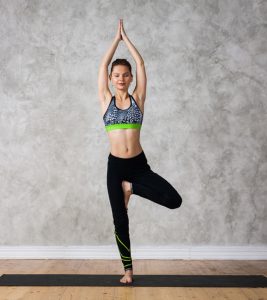
STEPS :
- Lie down on your stomach with hands on your sides.
- Keep feet hip-width apart and forehead resting on the ground.
- Extend your toe backward and press them down
- While taking deep breath press your hands down on ground and slowly start lifting your head and chest keeping your naval on the ground.
- Keeping your arms straight stretch the neck and focus on raising chest only.
- Maintain the posture for some time than slowly while exhaling bring down your head and chest back to floor at rest.
PRECAUTIONS :
- Back injuries
- Headache
- Recent abdominal surgery
- Pregnancy
- Peptic ulcers
- Hyperthyroidism
- VIPARITA KARANI ASANA ( LEGS UP THE WALL POSE ): It helps to relieve tiredness of leg and feet . Also relaxes hip and back muscles.
STEPS :
- Sit on the ground with one side of body touching the wall with legs extended forward
- Lie down while slowly bringing your legs against the wall with soles facing upwards.
- Your butt should be slightly away from wall and your legs making 90 degree angle with body.
- Use ankles to walk up the wall so hips are off the ground
- Stay in the position for couple of minutes than gradually return to initial position.
PRECAUTIONS :
- Heart conditions
- High blood pressure
- Cervical problem
- Pregnancy
- Menstrual cycle
- Glaucoma
PILES – YOGA ASANAS
- December 20, 2022
- Posted by Dr. Vaidya Karanvir Singh
- 0 Comment(s)
Piles is another name for hemorrhoids. Hemorrhoids are swelling containing enlarged blood vessels that are found inside or around the rectum and anus. The swelling can cause localized inflammation of other tissues.
WHAT ARE THE CAUSES OF PILES ?
There are several causes that contribute to development of piles. These causes increase pressure on blood vessels which supply to rectum and anus thus causing the vessels to swell.
- Lifting heavy weight
- Chronic constipation
- Chronic diarrhea
- Family history
- Rectal cancers
- Being over weight
- Prolonged sitting on toilet
- Straining during bowel movement
- Low- fiber diet
- Pregnancy
- Spinal cord injury
- Persistent cough or vomiting
WHAT ARE THE RISK FACTORS OF PILES ?
- Alcoholic liver disease
- elevated anal resting pressure
- Episiotomy
- Surgery related to anal canal or rectum
- Loss of tone of rectus muscle
- Inflammatory bowel disease
WHAT ARE THE TYPES OF PILES ?
Piles is divide into 2 types on the bases of their location. The types are :
- INTERNAL PILES : These are located between 2 to 4 cm above the opening of anus. They are generally painless as there are less pain sensing nerves in rectum. They are not usually visible during external examination. They are also know as prolapsed hemorrhoids.
- EXTERNAL PILES : These are small lumps on outside edge of anus. They are itchy and tends to become painful if blood clot is developed there. They require immediate medical treatment if clot is developed.
GRADES OF PILES :
There are four grades of Piles:
- Grade 1 : Small inflammation , usually inside the lining of anus . They does not cause symptoms and do not protrude out of anus.
- Grade 2 : Are large in size then grade 1 . they also remain inside anus but may protrude out during passing stool and return inside independently.
- Grade 3 :They protrude through anus during straining. But only return with manual intervention.
- Grade 4 : They remains prolapsed outside the anus and can’t be push back even with manual intervention.
WHAT ARE THE SYMPTOMS OF PILES ?
Some of the common symptoms are :
- Painful lump around and in the anus
- Discomfort and itching around anus
- Bloody stool
- Fecal incontinence
- Inability to control bowel movement
- Anal fistula
- Pain or discomfort while sitting
AYURVEDIC APPROACH :
It can be correlated with Arshas in ayurveda . Nidan sevan like excessive intake of dry, pungent, cold food , unwholesome food, prolonged fasting, day sleep , excess of exercise etc lead to vitiation of doshas ( vata, pitta and kapha) . The aggravated dosha contaminates the twak, mamsa and meda which leads to formation of mamsa ankuras at the opening of anus . These mamsa ankuras obstructs the pathway and cause trouble .
YOGA ASANAS :
- MALASANA (GARLAND POSE) : It is helpful in restoration of digestive system as it stretch and contract all the muscles involved in digestive process.
STEPS :
- Stand straight with legs apart and slowly squat without bending forward.
- Keep the spine straight as you descend.
- Bend the knees slowly keeping feet straight and toes pointing forward .
- When you are in full squat fold hands in front of body with palms touching.
- Hold the pose for3-4 minutes keeping the breath steady.
- Slowly rest the hips on the ground and relax.
PRECAUTIONS :
- Lower back pain
- Knee or hip injury
- Hernia
- High blood pressure
- Cervical problem
- BADDHA KONASANA (BOUND ANGLE POSE) : It helps to strengthen inner thighs ,knees and make them more flexible. It helps to energize gastrointestinal organs and relieves any digestive distress.
STEPS :
- Sit down on ground with back straight and relaxed shoulders.
- Start bending your knees slowly while bringing your feet together so soles of both feet are touching.
- Move the heels toward pelvis as close as your comfortable and hold the toes with both hands to provide support.
- Start flapping your legs like butterfly wings while taking deep breaths.
- Do as many time as you can and then gradually return to sitting position.
PRECAUTIONS :
- Knee , neck or hip injury
- Lower back pain
- Sciatic pain
- Pregnancy
- Spondylitis
- Menstrual cycle
- HALASANA (PLOUGH POSE) : It improve circulation of blood in abdomen and anus so helps to regulate digestive system .
STEPS :
- Lie down on your back with hands by your side and palms facing downward.
- Inhale and slowly lifting your feet off the ground using abdominal muscles raising leg to make 90 degree angle .
- Continue to take normal breaths while supporting your hips and back with your hands and lift them off the ground.
- Gently sweep your legs over the head till yours touches the ground behind your head
- Keep your back in perpendicular angle with the ground.
- Hold the pose for a minute and slowly return to initial position .
PRECAUTIONS :
- Asthma
- High blood pressure
- Menstrual cycle
- Pregnancy
- Diarrhea
- Heart Condition
- Neck or back injury
- SARVANG ASANA (SHOULDER STAND) :It also helps to regulate the digestive system by improving blood circulation in abdominal area.
STEPS :
- Lie down on your back and with hands by side.
- Lift your legs , hips and back slowly so that you come up high on your shoulders.
- Then place the elbows in such a position that it supports your body weight. But make sure your weight is not on neck and head as it can lead to injury
- Point outer part of sole outwards and tighten muscles
- Hold the posture for 30-60 seconds and then slowly return to resting position.
PRECAUTIONS :
- Menstrual cycle
- Neck or shoulder injury
- High blood pressure
- Headache
- Pregnancy
- Diarrhea
OBESITY – YOGA ASANAS
- December 20, 2022
- Posted by Dr. Vaidya Karanvir Singh
- 0 Comment(s)
INTRODUCTION
Obesity is a complex and chronic disorder which is associated with excessive amount of fat on body. A BMI (body mass index) of 30 or more is considered to be onset of obesity in adults. A BMI of 40 or more comes under severe obesity. Bad eating habits, genetics and lack of physical activity are the most common causes of obesity. It is not just a cosmetic concern but can lead to various other health related disorders like diabetes, heart problems, cancer, etc. Body with extra amount of fat has to do more work which leads to progressive changes which worsen overtime and causes various adverse effects.
However, it is difficult to lose weight but a moderate reduction in body weight can prevent various health problems. Healthy diet and regular exercise can help a person in losing weight. There are also various medicines and weight-loss procedures for treating it.
WHAT ARE THE VARIOUS CAUSES OF OBESITY?
When a person eats more calories in comparison to how much he burns, then he tends to gain weight. On a long term basis, these extra calories lead to obesity. However, this is the main reason but there are various other reasons also. The specific causes of obesity are:
- Having a genetic predisposition to obesity
- Increasing age as the rate of metabolism slows down
- Lack of sleep
- Pregnancy
- Polycystic ovarian syndrome
- Cushing syndrome
- Hypothyroidism
- Osteoarthritis that leads to reduced physical activity
SOME OF THE RISK FACTORS OF OBESITY
Some factors increase a risk of person developing obesity. Following are the risk factors:
- Smoking
- Alcohol intake
- Environmental factors
- Physical or emotional stress
- Hormonal imbalance
- Certain medications like anti-depressants, steroids, etc
- Any physical trauma
- Depression
WHAT ARE THE SYMPTOMS OF OBESITY?
Increase in body mass is the most common symptom of obesity. But it is often related to other metabolic symptoms. Men having a waist circumference of 40 inches or more and women having a waist circumference of 35 inches or more develop health related disorders to obesity. Following are the obesity related health problems:
- Insulin resistance
- Diabetes
- Chronic inflammation
- Coronary artery disease
- Fatty liver
- Cirrhosis of liver
- Inflammation of gall bladder
- Kidney stones
- Stroke
- Heart attack
- Heart failure
- Asthma
- Sleep apnea
- Osteoarthritis
- Pain in back
- Gout
YOGA FOR OBESITY
Yoga is very beneficial for getting rid of obesity. It helps in burning extra amount of body fat and helps in toning of muscles. If performed daily, it helps in keeping mind and body healthy. Following are the yoga asanas which are very beneficial for getting a fit body from fat body:
DHANURASANA
Dhanu means bow and asana means body posture. In dhanurasana, the shape of the body is made like that of a bow. The pose should be performed 4-5 hour after meals. The best time is of early morning.
How to do it:
- Lie in the stomach with the feet apart.
- Then fold the knees and take your hands backwards and hold the ankles.
- Breathe in and lift the chest up from the ground. Pull the legs upwards and more towards the back.
- Keep the body posture stable and see forward. Pay attention to the breath.
- Maintain posture for 15-20 seconds and bring the legs and chest gently to the ground.
Contraindications:
- Neck injury
- Hernia
- Hypertension or hypotension
- Lower back pain
- Migraine
- Recent abdominal surgery
SARVANGASANA
Sarvangasana is also known as shoulder stand. It is a yoga pose in which the whole body is balanced on the shoulders. Sarv means all, anga means a part of body and asana means body posture. It has an influence on the functioning of all the body parts. This asana is known as Queen of the asanas. It is very beneficial for maintaining physical and mental health.
How to do it:
- Lie on the back with hands on the side
- Then, with one movement, lift the legs, buttocks and back so that their weight comes on the shoulders. Support the back with both the hands.
- Keep the legs and spine straight with the help of elbows and hands to the back. The weight should be supported on shoulders and upper arms not on head and neck.
- Breathe deeply while maintaining the posture for 30-60 seconds.
- Then, lower the knees to forehead and bring your hands down to the floor. Without lifting the head, bring the spine down. Lower the legs on the floor and relax for a minimum of 60 seconds.
Contraindications:
- Pregnancy
- Menstruation
- Hypertension
- Glaucoma
- Slip disc
- Neck pain
- Spondylosis
KAPALBHATI PRANAYAM
Kapalbhati pranayam is a breath conscious yoga practice. It helps in strengthening immune system of body and keeps our body and mind healthy. Bu regularizing our breath, the stress hormone of the body decreases and excessive acid production is reduced.
How to do it:
- Sit in a straight posture with spine erect and place the hands on knees with palms open.
- Then take a deep breath in and exhale. During exhalation, pull the navel inwards as much as a person feels comfortable.
- As the navel and abdomen relaxes, the air flows in deeply.
- One should take 20 rounds of breath to complete one round of kapalbhati.
USTRASANA
Ustra means camel and asana means body posture. It is a very beneficial pose of back problems but if done regularly, it can help in management of acidity also. It increases digestion of body.
How to do it:
- Kneel on the yoga mat and place the hands on hips.
- Knees should be aligned with the shoulder and soles of feet should face ceiling.
- Arch the back and place the palms on soles.
- Neck should not be strained and kept in neutral position.
- Maintain the posture for a couple of breaths and then slowly come to the initial position.
Contraindications:
- Hypertension
- Low blood pressure
- Back injury
- Injury of the neck


